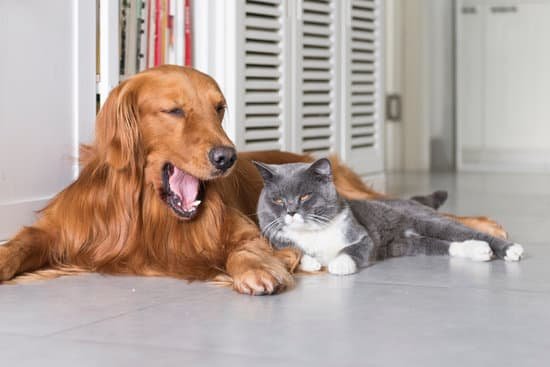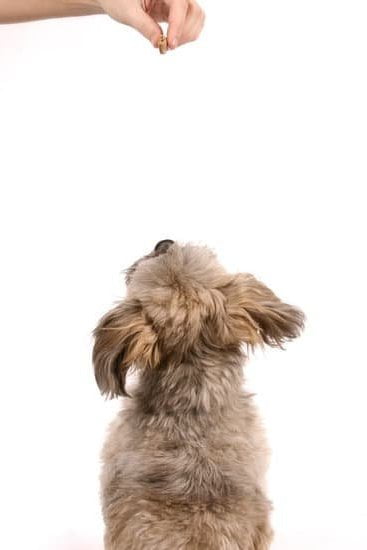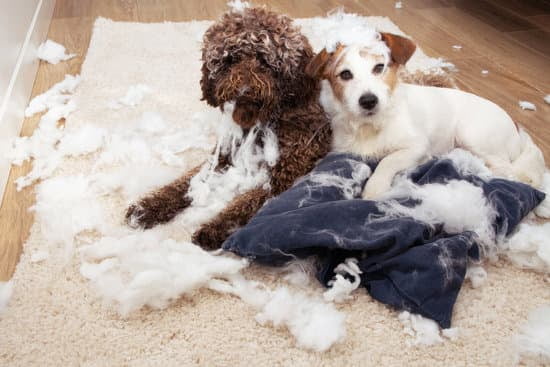Properly potty training your dog is essential for a harmonious and hygienic household. Whether you have a new puppy or an older rescue, it’s crucial to establish good bathroom habits from the start. In this article, we will guide you through the process of potty training your dog, providing helpful tips, techniques, and strategies to make the experience as smooth and successful as possible.
Understanding your dog’s behavior is the key to successful potty training. By recognizing their signals and body language when they need to go, you can proactively prevent accidents in your home. Furthermore, distinguishing between regular elimination and marking behavior is crucial in addressing any potential challenges during the training process.
Creating the ideal potty training environment plays a significant role in shaping your dog’s bathroom habits. By choosing a designated potty area and ensuring easy access to it, you are establishing consistency and familiarity for your furry friend. Additionally, setting up a clean and comfortable space for them to eliminate will further encourage proper bathroom behavior.
In order to achieve long-term success, consistency is key when it comes to potty training your dog. Establishing a routine that includes specific times for feeding, playtime, and potty breaks will help set expectations for both you and your furry companion. Reinforcing positive behavior with rewards and praise will further motivate them to continue following the established routine. Stay tuned as we delve into these topics in detail throughout this article on how best to potty train a dog.
Understanding Your Dog’s Behavior
Understanding your dog’s behavior is crucial for successful potty training. By recognizing your dog’s signals and body language, you can anticipate when they need to go and take them to their designated potty area in a timely manner. Dogs often exhibit signs such as sniffing the ground, circling, or whining when they need to eliminate. By paying attention to these cues, you can prevent accidents and reinforce positive bathroom behavior.
It is also important to understand the difference between regular elimination and marking behavior. Regular elimination refers to when dogs relieve themselves to empty their bladder or bowels, while marking behavior involves leaving small amounts of urine or feces to mark territory. Both behaviors require different approaches during potty training.
For regular elimination, it is important to consistently guide your dog to the designated potty area and reward them for eliminating there. On the other hand, if your dog displays marking behavior indoors, it may be necessary to address any underlying territorial issues with appropriate training methods.
Creating an ideal potty training environment is another key aspect of successfully potty training your dog. Choose a designated potty area in your home or yard where your dog will feel comfortable eliminating. This area should be easily accessible for your dog whenever they need to go.
Keep the area clean by promptly removing any waste and regularly cleaning the space with pet-friendly disinfectants. A clean and comfortable environment will help establish a positive association with eliminating in the appropriate place.
By understanding your dog’s behavior and establishing an ideal potty training environment, you are setting a strong foundation for successful potty training. In the next section, we will delve into how consistency plays a vital role in establishing a potty training routine that ensures steady progress towards reliable bathroom habits for your furry friend.
Setting Up the Ideal Potty Training Environment
When it comes to potty training your dog, setting up the ideal environment can greatly contribute to their success. Having a designated potty area in your home or yard allows your dog to understand where they are supposed to eliminate, making the training process more efficient and effective. Here are some key steps you can take to create the perfect potty training environment for your furry friend:
- Choose a designated potty area: Selecting a specific spot for your dog to do their business helps them develop consistent habits. Whether it’s in your backyard or in a designated indoor area, make sure the spot is easily accessible and convenient for both you and your dog.
- Create a clean and comfortable space: Dogs are more likely to use an area that is clean and inviting. Make sure the designated potty area is free of debris or any unpleasant odors that may discourage your pup from using it. Consider using materials such as gravel, artificial grass, or puppy pads that are easy to clean and maintain.
- Ensure easy access: Accessibility plays a crucial role in successful potty training. If you are using an outdoor area, ensure that there is a clear path for your dog to reach it easily. If you opt for an indoor solution, choose an area that is easily accessible throughout the day and close to where your dog spends most of their time.
By creating an ideal potty training environment, you provide your dog with the necessary tools and resources to learn where they should go to eliminate. Remember, consistency is key throughout the entire training process. With time and patience, your furry friend will become fully potty trained and enjoy all the benefits of good bathroom behavior.
Consistency is Key
Establishing a consistent potty training routine is crucial for successfully teaching your dog where and when to eliminate. Dogs thrive on routine and structure, so it’s important to design a schedule that includes regular feeding, playtime, and bathroom breaks. Here are some key techniques and strategies to help you establish a potty training routine that works for you and your furry friend:
- Designing a consistent schedule: The first step in establishing a potty training routine is creating a schedule for your dog’s daily activities. This should include set times for meals, playtime, and bathroom breaks. Dogs are creatures of habit, so sticking to a consistent schedule will help them understand when they need to go outside.
- Setting specific bathroom break times: The frequency of bathroom breaks will depend on your dog’s age, size, and breed. Puppies generally need to eliminate more frequently than adult dogs, so be sure to take them out every few hours. As they grow older and develop better bladder control, you can gradually increase the time between bathroom breaks.
- Reinforcing positive behavior: Positive reinforcement is key in potty training. Whenever your dog eliminates in the designated potty area at the right time, reward them with praise, treats, or both. This will help reinforce the desired behavior and motivate them to continue eliminating in the appropriate place.
In addition to these techniques, it’s important to exercise patience throughout the potty training process. Remember that accidents are part of the learning process and should be expected occasionally. Reacting calmly and redirecting your dog’s behavior in a positive way will help them understand what is expected of them.
By establishing consistency in your dog’s daily routine and reinforcing positive behavior during potty training, you’ll set them up for success in learning where and when to eliminate.
Techniques and Strategies for Effective Potty Training
Crate Training
One popular technique for potty training dogs is crate training. This method utilizes a crate, or a small and safe confined space, to assist in the potty training process. Dogs naturally have an instinct to keep their living area clean, so by using a crate, you can create a designated space for your dog to eliminate outside of their living space.
The key to successful crate training is making sure the crate is the right size for your dog. It should be large enough for them to stand up, turn around, and lie down comfortably, but not too spacious that they can use one end as a bathroom and sleep on the other end.
When introducing the crate, it’s important to make it a positive and comfortable environment for your dog. You can do this by placing soft bedding inside, providing toys or chew bones, and gradually getting them accustomed to spending short periods of time in the crate.
Clicker Training
Another effective strategy for potty training is clicker training, which uses positive reinforcement to reinforce desired behaviors. Clicker training involves using a clicker device (a small handheld tool that makes a distinct clicking sound) and treats. The first step is to associate the clicker with rewards by clicking it and immediately offering a treat. This will help your dog understand that the click means they did something right.
To use clicker training for potty training, you should take your dog outside to their designated potty area. When your dog starts eliminating, wait until they finish and immediately click the clicker followed by giving them a reward. Over time, your dog will start associating going potty in the designated area with receiving praise and treats.
Leash Training
Leash training can also be incorporated into effective potty training techniques. Teaching your dog to eliminate on command during walks can give you better control over their bathroom habits. Start by using a consistent phrase or word, such as “go potty” or “busy,” every time you take your dog outside to eliminate. When your dog starts eliminating, repeat the command and praise them when they finish.
It’s important to be patient and give your dog enough time to finish before rewarding them. Use treats or verbal praise to reinforce their good behavior. Consistency is key in leash training, so make sure you always use the same command and reward system during walks.
By utilizing techniques like crate training, clicker training, and leash training, you can effectively potty train your dog and set them up for success in the future. Remember to be patient and consistent with your training efforts, as every dog learns at their own pace. With time and dedication, you will have a well-potty trained dog who understands where and when to do their business.
Addressing Accidents
Accidents are bound to happen during the potty training process, especially in the early stages. It’s important to understand that accidents are a normal part of the learning process for your dog. Instead of becoming frustrated or angry, it’s crucial to react and correct these accidents in a positive and understanding manner.
Understanding accidents as part of the learning process
It’s essential to have realistic expectations when it comes to potty training your dog. Accidents will happen, especially while your dog is still getting the hang of things. Puppies have small bladders, so they may not be able to hold their urine for extended periods. Older dogs may take some time adjusting to new routines and training methods.
When accidents occur, it’s important not to punish your dog. Punishing your dog for accidents can lead to fear or anxiety around elimination, making the potty training process more challenging. Instead, focus on reinforcing positive behavior and redirecting their attention towards appropriate elimination areas.
Cleaning up accidents promptly and effectively
When accidents happen, it’s essential to clean up promptly and effectively to avoid repeat incidents. Dogs have a keen sense of smell and may be attracted back to an area where they’ve previously eliminated if it’s not thoroughly cleaned.
Use pet-friendly enzymatic cleaners designed specifically for removing pet stains and odors from carpets or other surfaces. These cleaners break down enzymes in urine that cause odor and help prevent future accidents in the same spot. Avoid using ammonia-based cleaning products as they can actually attract dogs due to their similarity with urine odor.
Avoiding punishment and redirecting behavior
Instead of punishing your dog for accidents, focus on redirecting their behavior towards appropriate elimination areas. If you catch your dog in the act of eliminating indoors, interrupt them gently by clapping your hands or making a noise without scaring them. Quickly guide them outside to the designated potty area and reward them when they finish eliminating there.
If you discover an accident after it happened, do not scold or punish your dog. Clean up the mess calmly and avoid showing negative emotions towards your dog. Punishment will only make your dog associate elimination with fear or anxiety, hindering the potty training process. Instead, reinforce positive behavior by rewarding and praising your dog when they eliminate in the correct area.
By understanding accidents as a part of the learning process, cleaning up promptly and effectively, and avoiding punishment while redirecting behavior, you can help your dog learn proper potty training habits more effectively. With consistency and patience, accidents will become less frequent as your dog progresses in their training journey.
Troubleshooting Common Potty Training Challenges
Potty training a dog can sometimes be a challenging process with various setbacks and obstacles along the way. Understanding how to address common challenges can make the potty training journey smoother for both you and your furry friend. This section will provide some helpful tips on troubleshooting common potty training challenges.
One common challenge during potty training is dealing with resistance and stubbornness from your dog. Some dogs may be hesitant to eliminate in designated areas or may resist following the established routine. In these cases, it is important to remain patient and consistent. Stick to the established schedule and continue providing positive reinforcement when your dog eliminates in the designated area.
Another challenge that pet owners often encounter during potty training is managing separation anxiety. Separation anxiety can make it difficult for dogs to focus on their potty training routine or communicate their needs effectively. To address this challenge, gradually introduce periods of separation while ensuring that your dog has access to their designated potty area during these times. It may also be beneficial to consult with a professional trainer or behaviorist for additional support.
Additionally, regression in potty training progress can occur even after significant progress has been made. This regression could be triggered by changes in routine, new environments, or emotional distress. If your dog starts having accidents again despite previous successes, go back to basics by reinforcing the established routine and providing plenty of opportunities for your dog to eliminate outside.
By understanding these common challenges and implementing appropriate strategies, you can navigate through any setbacks that may arise during the potty training process. Remaining patient, consistent, and positive will encourage your dog’s success and help them develop proper bathroom behavior.
| Challenge | Troubleshooting Tips |
|---|---|
| Resistance and stubbornness | – Remain patient and consistent
|
| Separation anxiety | – Gradually introduce periods of separation
|
| Regression in progress | – Reinforce established routine
|
Gradual Progression
Graduating from potty training to housebreaking is an important milestone in your dog’s journey towards becoming fully housetrained. This section will discuss the gradual progression that should be followed to ensure a successful transition.
To begin, it is crucial to gradually expand your dog’s freedom within the house as they prove reliable with their potty training. Start by allowing them access to one room at a time, and only once they consistently eliminate in the designated potty areas. This step-by-step approach helps prevent accidents and ensures that your dog understands the boundaries of where they are allowed to eliminate.
As your dog demonstrates reliability indoors, it is time to transition from using designated potty areas inside the house to relying solely on outdoor elimination. This step is important as it reinforces the understanding that eliminating indoors is no longer acceptable behavior. Take your dog outside regularly and provide ample opportunities for them to relieve themselves in appropriate outdoor spaces.
Maintaining consistency throughout this process is key to reinforcing proper bathroom behavior. Stick to a consistent schedule for feeding, playtime, and bathroom breaks, ensuring that your dog has regular opportunities to eliminate outside. Be diligent in providing positive reinforcement, rewards, and praise whenever your dog eliminates outdoors, helping them understand that this behavior is desired.
| Step | Description |
|---|---|
| Expand Freedom Indoors | Gradually increase access to different rooms as your dog proves reliable with potty training. |
| Transition Outdoors Only | Shift from using designated potty areas inside the house to relying solely on outdoor elimination. |
| Maintain Consistency | Stick to a consistent schedule for feeding, playtime, and bathroom breaks, providing ample opportunities for your dog to eliminate outside. |
| Positive Reinforcement | Continue rewarding and praising your dog for eliminating in appropriate outdoor spaces. |
By following these steps and maintaining patience as your dog progresses, you can successfully transition them from potty training to housebreaking. Remember that each pet is different and may progress at their own pace. Celebrate every success along the way, and always emphasize the importance of patience in this process.
Conclusion
In conclusion, potty training your dog is an essential part of pet ownership that requires time, patience, and understanding. By following the tips and strategies outlined in this article, you can establish a strong foundation for successful potty training.
Understanding your dog’s behavior and properly recognizing their signals and body language is key to effectively training them. Creating an ideal potty training environment that is clean, comfortable, and easily accessible will help set your dog up for success. Consistency in establishing a routine and using techniques such as crate training, clicker training, and leash training will reinforce positive behavior.
It’s important to remember that accidents are a normal part of the learning process. Instead of punishing your dog for accidents, focus on redirecting their behavior in a positive way. Troubleshooting common challenges, such as resistance or regression in progress, requires patience and perseverance.
As you see progress in your dog’s potty training journey, it’s important to celebrate their successes. Gradually expanding their freedom in the house and transitioning to outdoor elimination only signifies their reliability and progress. Remember to maintain consistency throughout the process to reinforce proper bathroom behavior.
Ultimately, successful potty training is a result of dedication, consistency, and patience on the part of the owner. By investing time and effort into properly potty training your dog, you are ensuring a happy and harmonious relationship with your furry friend for years to come.
Frequently Asked Questions
How can I potty train my dog fast?
Potty training a dog requires consistency, patience, and positive reinforcement. To potty train your dog quickly, establish a routine that includes regular bathroom breaks throughout the day. Take your dog outside to their designated potty area immediately after waking up, after meals, and before bed. Use verbal cues or commands to encourage them to eliminate, such as “go potty” or “do your business.”
When your dog successfully goes in the right place, praise and reward them with treats or affection. Additionally, closely supervise your dog indoors and watch for signs of needing to go outside, like circling or sniffing around. If accidents occur inside the house, clean them thoroughly using enzymatic cleaners to remove any lingering scent that might attract them back to that spot.
How long does it take to potty train a dog?
The time it takes to potty train a dog can vary depending on various factors such as the breed of the dog, their age, previous training experiences, consistency in training efforts, and individual differences in learning abilities. Generally speaking, it may take anywhere from a few weeks to several months to fully potty train a dog.
Puppies typically have less control over their bladder and bowel movements when they are younger but can learn faster with consistent training methods. Adult dogs or rescue dogs may also require longer training periods if they have not been previously taught appropriate elimination habits or have had negative experiences associated with going in specific places.
How do I train my dog to pee and poop in the right place?
Training your dog to pee and poop in the right place involves using positive reinforcement techniques and establishing clear communication with your pet. Start by selecting a designated bathroom area outside where you want your dog to go regularly. Take them there consistently for each bathroom break during their training period. Encourage them with verbal cues such as “go potty” while they are eliminating so they associate the command with the act itself.
When they succeed in going in the correct spot, praise and reward immediately afterward with treats or playtime so they understand they’ve done something right. Avoid scolding or punishing your dog for accidents as this can cause confusion and hinder the training process. As your dog becomes more consistent in using the designated area, gradually reduce the treats and rewards but continue to provide verbal praise as positive reinforcement for their good behavior.

Welcome to the blog! I am a professional dog trainer and have been working with dogs for many years. In this blog, I will be discussing various topics related to dog training, including tips, tricks, and advice. I hope you find this information helpful and informative. Thanks for reading!





